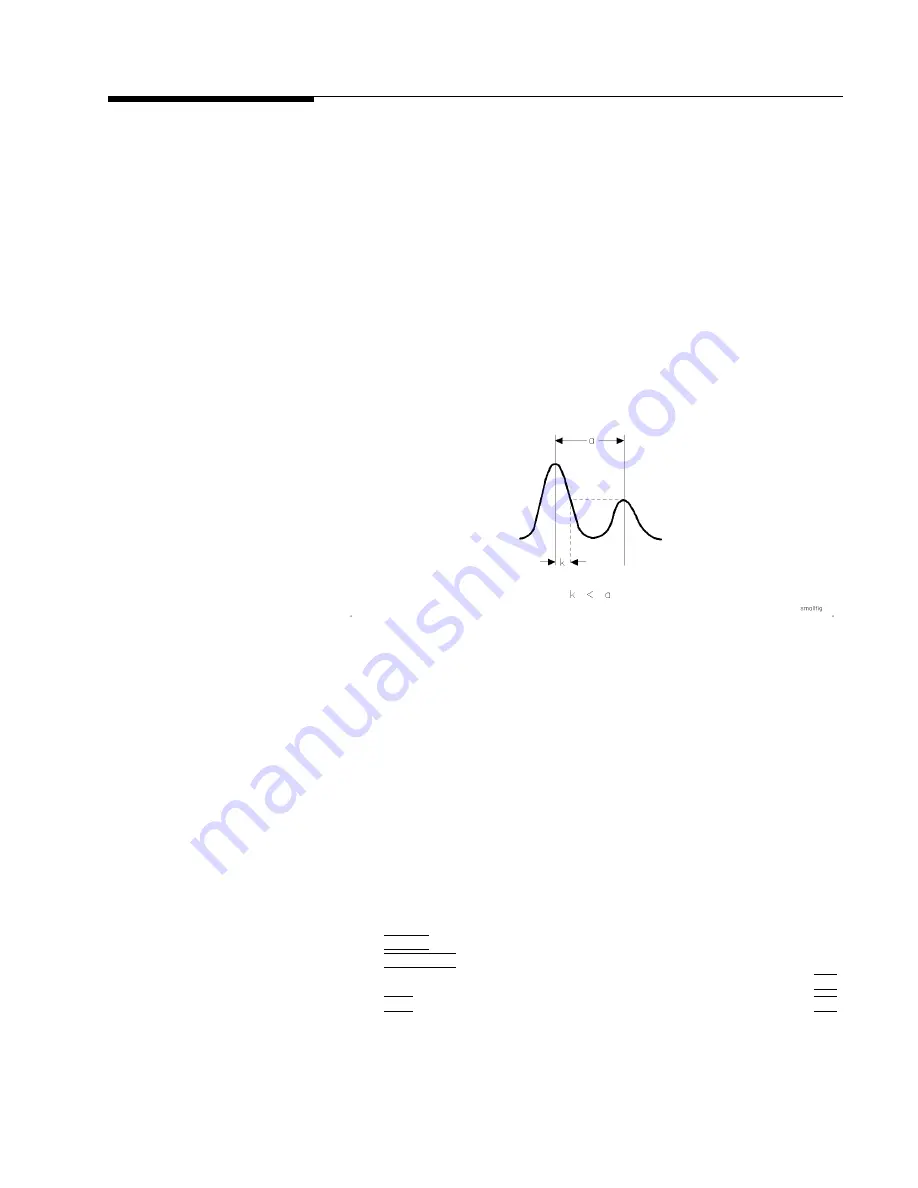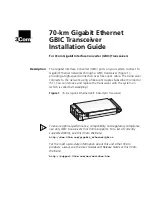
Resolving
Small
Signals
Hidden
by
Large
Signals
When
attempting
to
resolve
signals
that
are
not
equal
in
amplitude
,
you
must
consider
the
shape
of
the
IF
lter
as
well
as
its
3
dB
or
6
dB
bandwidth.
The
shape
of
the
measurement
lters
is
dened
by
CISPR
16.
The
shape
of
the
diagnostic
lter
is
dened
by
the
shape
factor
,
which
is
the
ratio
of
the
60
dB
bandwidth
to
the
3
dB
bandwidth.
(Generally
,
the
IF
lters
in
this
receiver
have
shape
factors
of
15:1
or
less
.)
If
a
small
signal
is
too
close
to
a
larger
signal,
the
smaller
signal
can
be
hidden
by
the
skirt
of
the
larger
signal.
T
o
view
the
smaller
signal,
you
must
select
an
IF
bandwidth
such
that
k
is
less
than
a.
See
Figure
6-3.
Figure
6-3.
IF
Bandwidth
for
Resolving
Small
Signals
The
separation
between
the
two
signals
must
be
greater
than
half
the
lter
width
of
the
larger
signal
at
the
amplitude
level
of
the
smaller
signal.
The
following
example
resolves
two
input
signals
with
a
frequency
separation
of
100
kHz
and
an
amplitude
dierence
of
50
dB
.
1.
Obtain
two
signals
with
a
100
kHz
separation
by
connecting
the
equipment
as
shown
in
the
previous
section,
\Resolving
Signals
of
Equal
Amplitude
".
2.
Set
the
receiver
to
a
known
state
by
pressing:
4
PRESET
5
4
FREQUENCY
5
N
NNNNNNNNNNNNNNNNNNNNNNNNNNNNNNNNNN
CENTER
FREQ
:
:
:
:
:
:
:
:
:
:
:
:
:
:
:
:
:
:
:
:
:
:
:
:
:
:
:
:
:
:
:
:
:
:
:
:
:
:
:
:
:
:
300
4
MHz
5
4
SP
AN
5
:
:
:
:
:
:
:
:
:
:
:
:
:
:
:
:
:
:
:
:
:
:
:
:
:
:
:
:
:
:
:
:
:
:
:
:
:
:
:
:
:
:
:
:
:
:
:
:
:
:
:
:
:
:
:
2
4
MHz
5
Making
EMI
Diagnostic
Measurements
6-5
















































